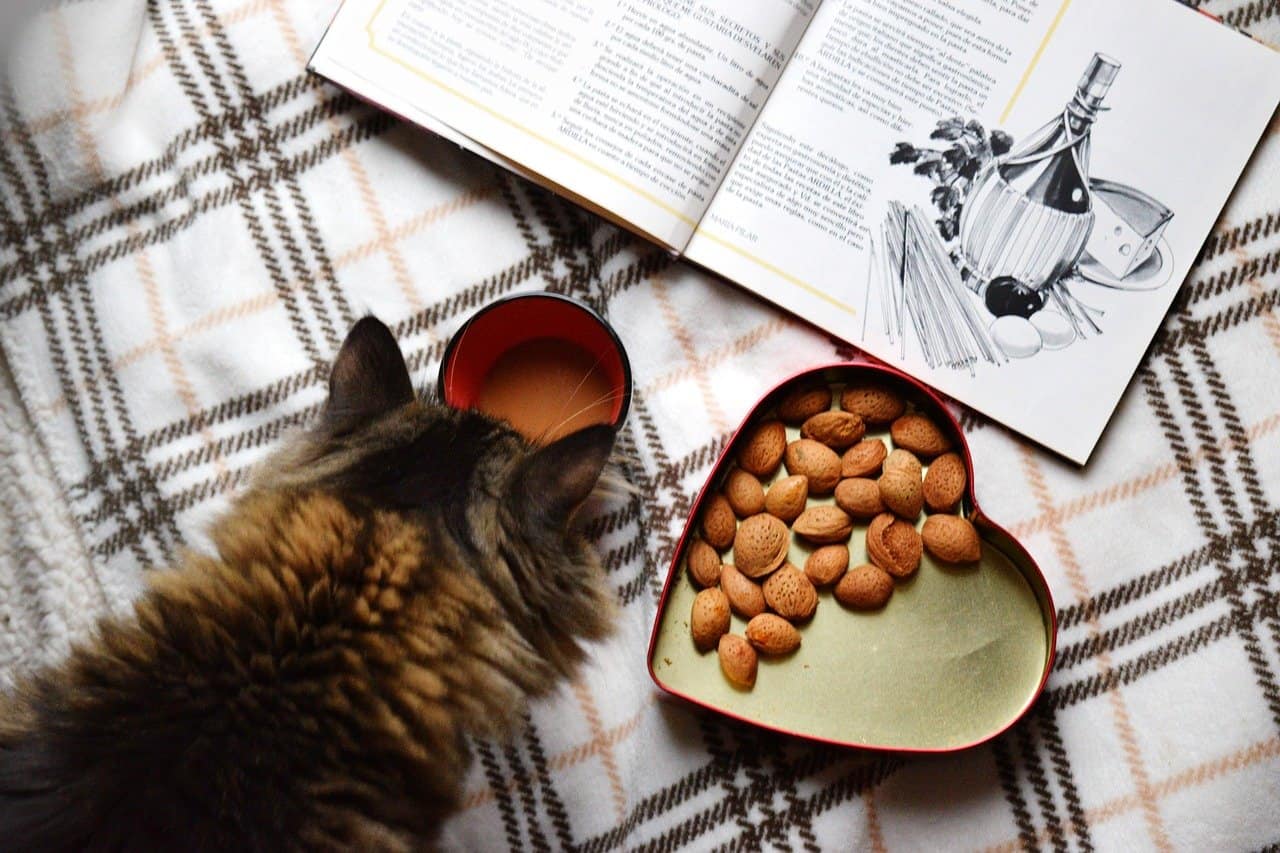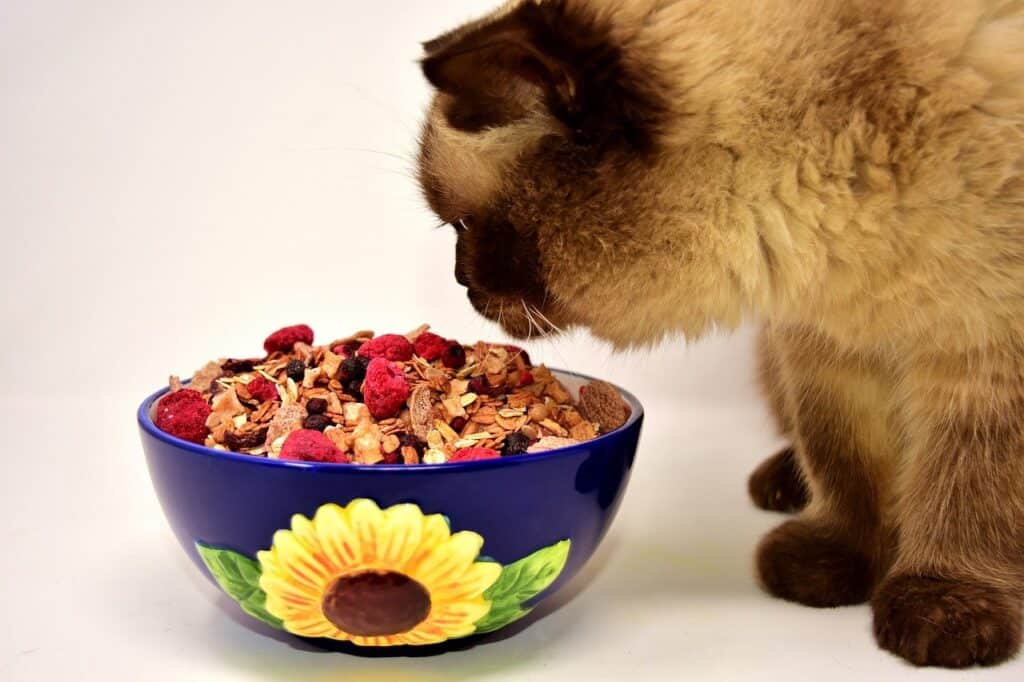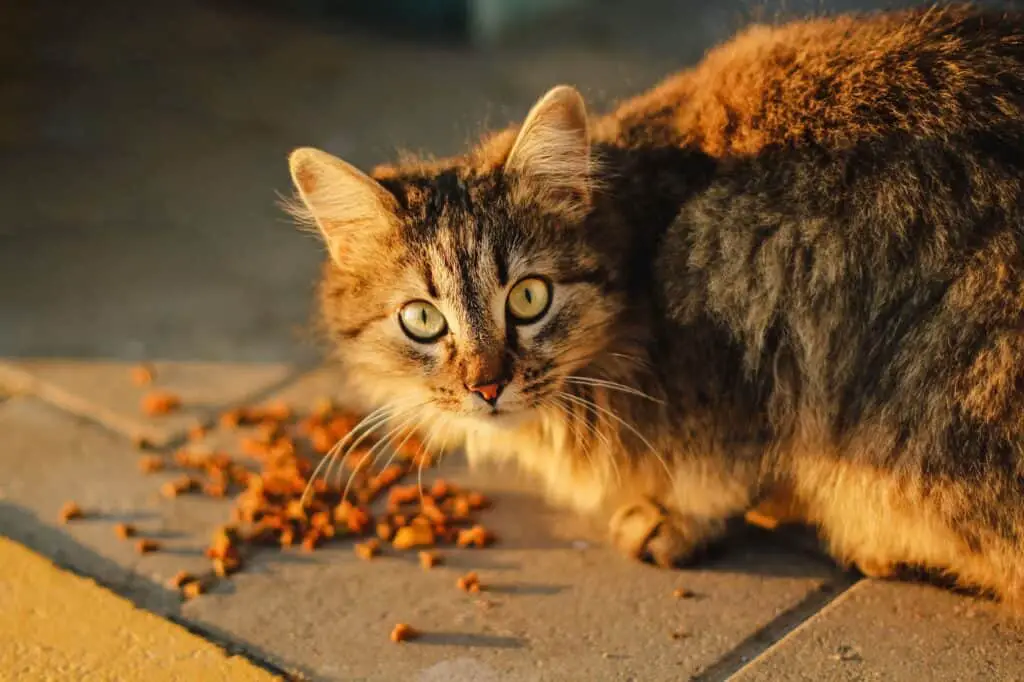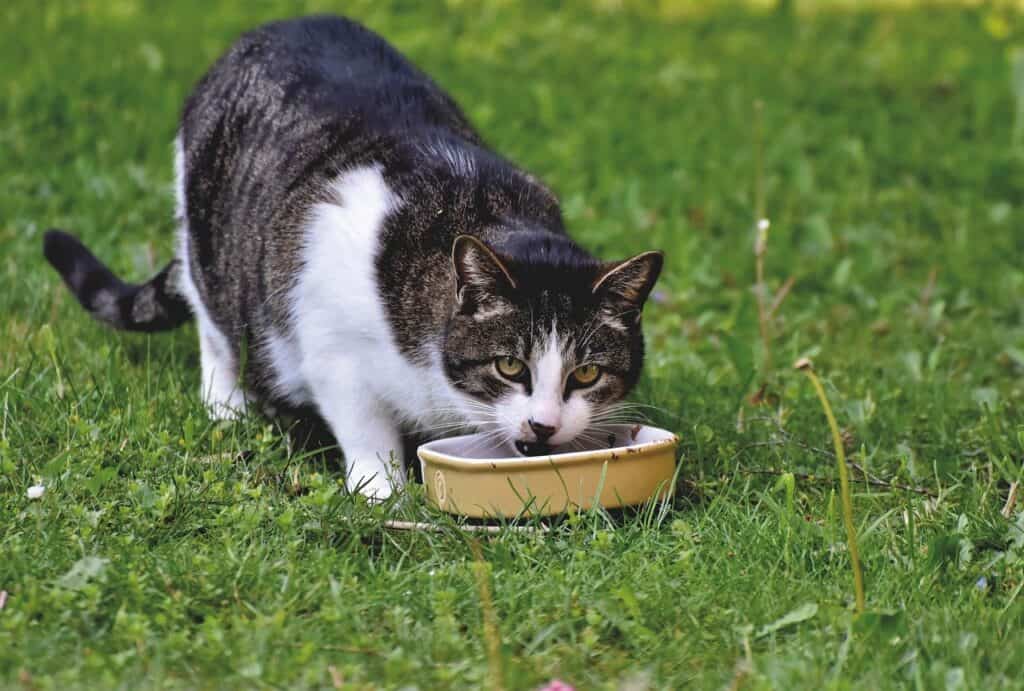It can be pretty easy to fear the worst when your beloved feline regularly doesn’t finish her food. But, this is quite common, and usually, there is a clear reason why they don’t eat everything in their bowl. Most cat owners have come across this situation at some point, and usually, there’s no need to worry, but your cat may be trying to tell you something.
So, why don’t cats finish their food?
Generally speaking, cats may not finish their food for the same reasons as humans. Either they are full, they need a more diverse menu, or they are uncomfortable while eating. Cats have small stomachs and eat small amounts throughout the day. Also, they don’t need to consume a lot of calories to stay healthy.
While it can be concerning to see food remnants in your fluffy friend’s bowl, rest assured that there are plenty of harmless reasons why this is the case.
Join us as we cover some of the most common reasons why our feline companions may leave leftovers and what we can do about it as caregivers.
Reasons why cats don’t finish their bowl
Although there are some more problematic reasons for cats not finishing their food, most cases involve minor aspects.
More often than not, your cat is simply following their natural inclinations, and you need not fret about it. Instead, attempt to identify the reason, as there are plenty of changes you could make to encourage proper eating habits.
Your cat’s stomach may be full
Cats’ stomachs are quite small, and they cannot eat much before they become full. The average stomach size of a cat is about the size of a ping-pong ball.
As a result, your cat may only eat a tiny amount of food before she’s full, after which it may leave the rest of the food behind for later.
Some cats are also known to ‘steal’ or beg for their owner’s food. Eating bits and pieces of non-cat food may fill them up quickly as well. Apart from that, you may want to think twice about sharing your food with your cat.
Your cat’s activity levels
Depending on the nature of your unique cat, they may need more or fewer calories to support their daily activities.
Some cat breeds are far more active and energetic than others, which may mean they will eat more frequently or larger amounts at a time. On the other hand, relaxed and laidback cats require much fewer calories to be content.
So, you may just be feeding your cat more than she needs to support her daily calorie requirement.
The below table gives an overview of the recommended daily calorie intake for cats, depending on your cat’s weight.
| Daily recommended calorie intake for cats | 5 lbs | 10 lbs | 15 lbs | 20 lbs |
|---|---|---|---|---|
| Kitten | 200 kcal | 400 kcal | 600 kcal | 800 kcal |
| Lean Cat | 170 kcal | 280 kcal | 360 kcal | 440 kcal |
| Overweight Cat | 180 kcal | 240 kcal | 280 kcal | 310 kcal |
| Pregnant Cat | 336 kcal | 603 kcal | 850 kcal | 1090 kcal |
Your cat’s age
Cats eat different amounts of food depending on their age. Younger cats generally need more nutrition than older cats, and they also eat more frequently throughout the day. This is because the youngsters are still developing plenty of vital bodily functions and they are more active throughout the day.
Because of ancestral Instincts
Even though your fuzzy feline may seem adorable and domesticated, cats are natural predators. They would typically hunt and catch their meals throughout the day when living in the wild, feeding on small prey such as birds or rodents.
This instinct still lingers within their genetics, irrespective of how comfy they may be in your home.
Because of this distinct and inherent characteristic, cats will feed on and off throughout the day in different amounts.
On average, cats can eat up to 15 times every day. If your cat is an obvious hunter, you may even be able to try different tactics to play on these instincts and encourage them to eat more frequently.
For example, try hiding small treats throughout the house for your cat to find. They’ll enjoy the game, and it also stimulates them to get plenty of exercise.
Your cat wants a more varied menu
Us cat lovers know how fussy they can be, and while it’s undoubtedly a loveable trait, it can be hard to handle as well.
Although many cats can seem content eating the same thing every day, most cats want some variation.
You know your cat best and should be able to tell if it’s not hungry or is simply bored of the meals you’re giving them. If budget allows, try and spice things up for them as your cat may only want a breath of fresh air concerning their food and treats.
A varied menu also ensures your cat gets all the required nutrients.
The food may not be fresh anymore
Cats won’t eat food that isn’t fresh, and the leftovers in her bowl may not be up to her standards.
Food does not last very long when left in your cat’s bowl. This is particularly the case with wet food. If it’s been standing out for more than four hours, it’s time to wash the bowl and give your cat a fresh meal.
In this case, your cat is usually not shy to let you know.
Cats may stare at the food bowl with an odd expression and then peer back at you – as if they are staring at an empty food bowl.
They may even go back and forth, returning to repeat this behavior every so often. If your cat is behaving in such ways, it can be a clear sign they are hungry but do not want to eat whatever is in their bowl.
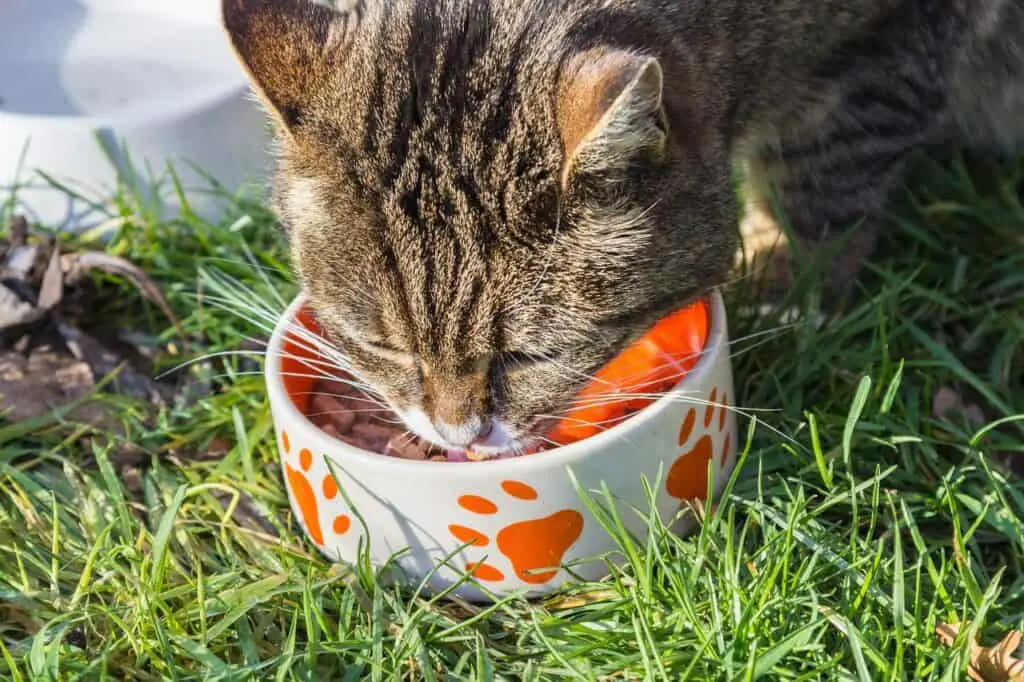
What to do if your cat doesn’t finish her food
The best way to encourage your cat to finish her food is to understand their eating preferences. This consists of feeding the right amounts for your cat, offering variety in their diet, and providing the right eating conditions.
Try different food options and approaches
We all know that cats can be picky eaters, and their preferences may also change over time.
When your cat used to finish her bowl but now regularly leaves food out, she may be bored of her usual diet, and she’s trying to tell you it’s time for a change.
Finding your cat’s preference is often an exercise of trial and error. It will take time to see what she likes. Try to experiment a bit with different brands, varying flavors, textures, or try out different types such as wet food, dry foods, meat chunks, or jelly.
Food play can also help them regain enthusiasm towards mealtimes and keep them fed throughout the day without even worrying about the food bowl.
Puzzle feeders can be an excellent approach for supplying treats around the clock with some interactive play and brainwork.
Feed the right amounts
What is most important when providing meals is that you understand how much your cat needs to eat and how often throughout the day.
Even though there are many averages, every cat is unique based on breed, age, and activity levels.
It is better to provide them with smaller portions throughout the day instead of giving them an abundance of food at once.
Although you may think you are giving them ample food and allowing them to eat whenever they want, it may not always work out this way.
In most cases, your cat no longer wants the leftovers in her bowl by the end of the day, which will only lead to wasted food.
Clean your cat’s food bowl regularly
Cats are infamous for their near-perfect hygiene standard. This extends to their eating patterns as well.
If it’s been a while since you’ve given your cat’s bowl a good scrub, it’s not surprising that they don’t want to eat from it. Ask yourself, would you like to eat from a dirty plate?
Best practice is to wash your cat’s bowl once a day to keep it clean and avoid nasty smells, which may prevent your cat from eating.
Feed multiple cats seprately
If you have multiple cats, feed them from separate bowls.
Cats are very territorial when it comes to food and with some rare exceptions, they don’t like sharing the same food bowl with each other. This may cause stress during dinner time and can also cause your cat to not finish their food.
See our article about why cats don’t like to share feeding bowls for more info and how to feed them instead.
Make sure it’s not a medical issue
If all else fails and your cat is still not eating as much as she should, it may be time to visit the vet and rule out any medical cause. However, in most cases, you can be sure that your precious and purring companion is eating happily by taking the before-mentioned steps.
What food bowl is suitable for your cat?
Many of us have witnessed our cats feeding only at the bowl’s center while leaving the food that’s around the edges.
This may seem odd, but it’s pretty standard, and your cat’s whiskers cause it.
Cats have sensitive whiskers, and when touching the edge of the bowl over and over while eating, it causes something called; “whisker fatigue”.
Repetitive touching the feeding bowl’s edge can be a very unpleasant and even painful experience for your cat.
Whey you think whisker fatigue is an issue for your cat, look into changing your cat’s feeding bowl and see if the situation gets better.
What food bowls are best for cats?
Deep bowls are the most problematic for cats because they cause them to touch the edges with their whiskers as they eat.
It’s always best to go for a food bowl that is shallow, wide, and has small edges. This avoids whisper fatigue, and cats can easily reach all their food.
Does placement matter?
Yes, even though many cat owners place food bowls on the ground, it’s not the best approach. Putting food bowls on the floor isn’t great for their posture as they often need to dip their necks and heads lower than comfortable.
It’s good to place your cat’s food bowl on an elevated surface such as this one so that their necks can be straight while eating.

